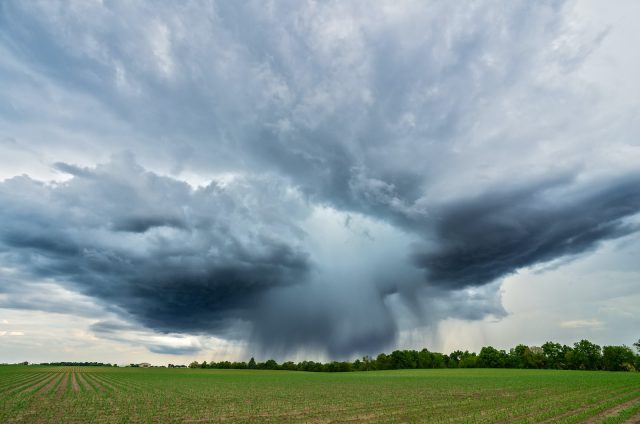The weather affects us all in some way, whether you’re a farmer who needs good rain for growing crops or an outdoor enthusiast looking for the perfect day to take a hike. Understanding the science behind the weather is key to making informed decisions about planning activities and even staying safe in hazardous conditions. Meteorology is the study of weather and climates, and this article will provide a beginner’s guide to understanding how meteorology impacts our daily lives.
What is Meteorology?
Meteorology is the scientific study of the atmosphere and how it affects our weather. It involves understanding the physical processes within our atmosphere that cause temperature, pressure, and wind speed changes. This discipline also covers observing weather patterns over time to predict future climate conditions. Meteorology provides us with many tools to understand the ever-changing environment around us better. For those just beginning to explore meteorology, there are several ways to gain a deeper understanding of this field of science. To start, it is important to learn the basics: concepts such as air pressure systems, cloud formation and types, global circulation models, and air masses that affect weather worldwide. With a foundational knowledge of meteorology, you can begin exploring more complex topics, such as forecasting techniques or how climate change impacts our world.
Types of Weather: Clouds and Precipitation
Understanding the weather through meteorology can be quite daunting for a beginner. Knowing the different types of clouds and precipitation is a great way to get started. Clouds are essential components of Earth’s weather system and come in various shapes, sizes, and forms. They form when tiny droplets of water or ice crystals coalesce within the atmosphere, resulting in different cloud types such as stratus, cumulus, cirrus, nimbostratus, and cumulonimbus clouds.
Precipitation is any form of water that falls from the sky, including rain, hail, sleet, or snow. Its formation depends upon air temperature and pressure, while its intensity is determined by how much moisture is present in the atmosphere. By understanding these two aspects of weather – clouds, and precipitation – one can develop an appreciation for all things related to meteorology!
Air Pressure and Winds
Understanding air pressure and winds is a fundamental area of meteorological learning. Air pressure, also known as atmospheric pressure or barometric pressure, results from the weight of air molecules in Earth’s atmosphere. Winds are created by differences in temperature or air pressure between two regions. With some basic understanding, anyone can become familiar with these particular aspects of meteorology. Air pressure is measured using an instrument called a barometer to detect changes in the atmosphere, such as rising or falling temperatures. Winds form when warm air rises due to differences in temperature while cooler air moves into its place, creating unevenness across different regions. These changes can be observed by tracking wind speed and direction, which remains consistent at certain altitudes regardless of external conditions like seasonality and time of day.
Measuring Weather Conditions
The weather is often unpredictable, and understanding it can feel like a never-ending challenge. However, meteorology provides us with the tools to help accurately measure and predict the weather. Meteorologists rely on thermometers and barometers to measure temperature, air pressure, wind speed, humidity levels, and more. These measurements allow scientists to interpret data that helps us better understand how our environment works. Additionally, sophisticated computer models enable us to forecast weather changes days or weeks in advance. By utilizing these measurement techniques, we can gain insight into our atmosphere and its effects on our lives – from planning outdoor activities around sunny days to preparing for severe storms when meteorologists predict them.
Exploring Weather Patterns
Exploring weather patterns can be a great way to understand the environment around us better. Meteorology is the study of atmospheric phenomena and weather forecasting. It’s an important scientific field that helps us predict rapidly changing weather conditions and prepare for dangerous storms. First, it’s important to understand the difference between climate change and global warming. Climate change refers to long-term weather trends in a specific region over many years, while global warming describes an overall increase in average temperature worldwide due to human activity. Both have far-reaching implications for our planet’s future and are key research areas for meteorologists today. Understanding how these factors affect local weather patterns can help us develop strategies for mitigating potential damage before it occurs.
Impact of Technology on Meteorology
Technology has revolutionized the field of meteorology, allowing us to understand more about the weather. Meteorologists today can use sophisticated models and data-driven tools to accurately predict and forecast the weather more accurately than ever before. Thanks to technological advancements, meteorologists have more precise insights into how certain weather patterns form, what triggers them, and where they are headed – all factors that can help us better prepare for severe or hazardous weather events. To understand the impact of technology on meteorology, it’s essential to understand the basics of how we observe and measure the atmosphere. From satellites orbiting Earth which provide high-quality images of cloud formations or low-pressure systems moving across a continent to radar systems that track rain intensity or hail size – these tools give us an unprecedented view into our planet’s ever-changing climate.
Conclusion: A Growing Field
With advancements in technology, scientists are able to track and make predictions about the weather with greater accuracy than ever before. This has led to more accurate forecasts and warnings during extreme weather events like hurricanes or tornadoes. Additionally, meteorologists are now able to study phenomena such as climate change which impact various areas around the globe. As our global climate continues to shift, meteorologists will play a key role in helping us understand how these changes affect our planet and what we can do to mitigate them. Ultimately, meteorology remains an important and growing field of study that provides invaluable insights into our global climate system.






























